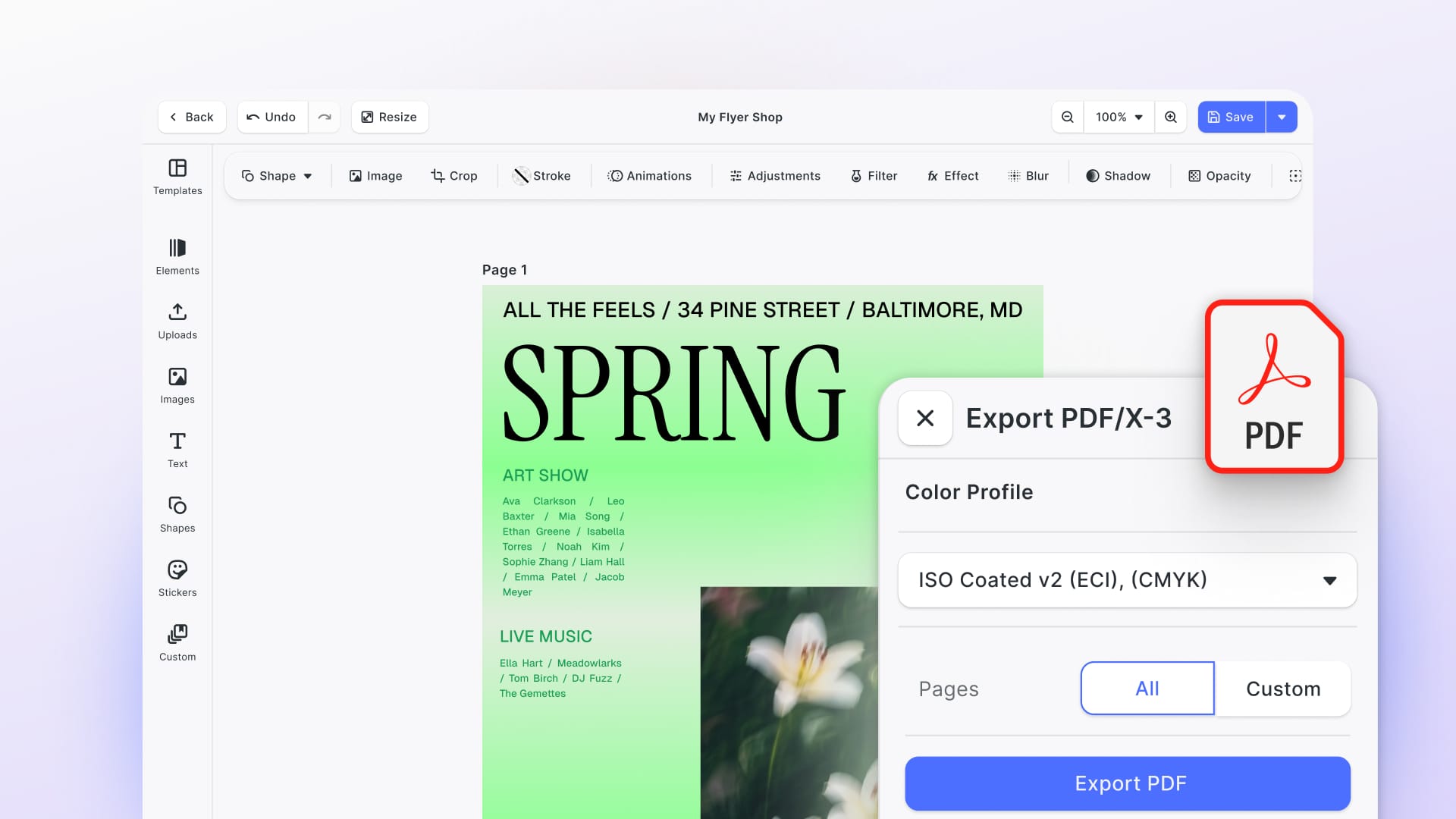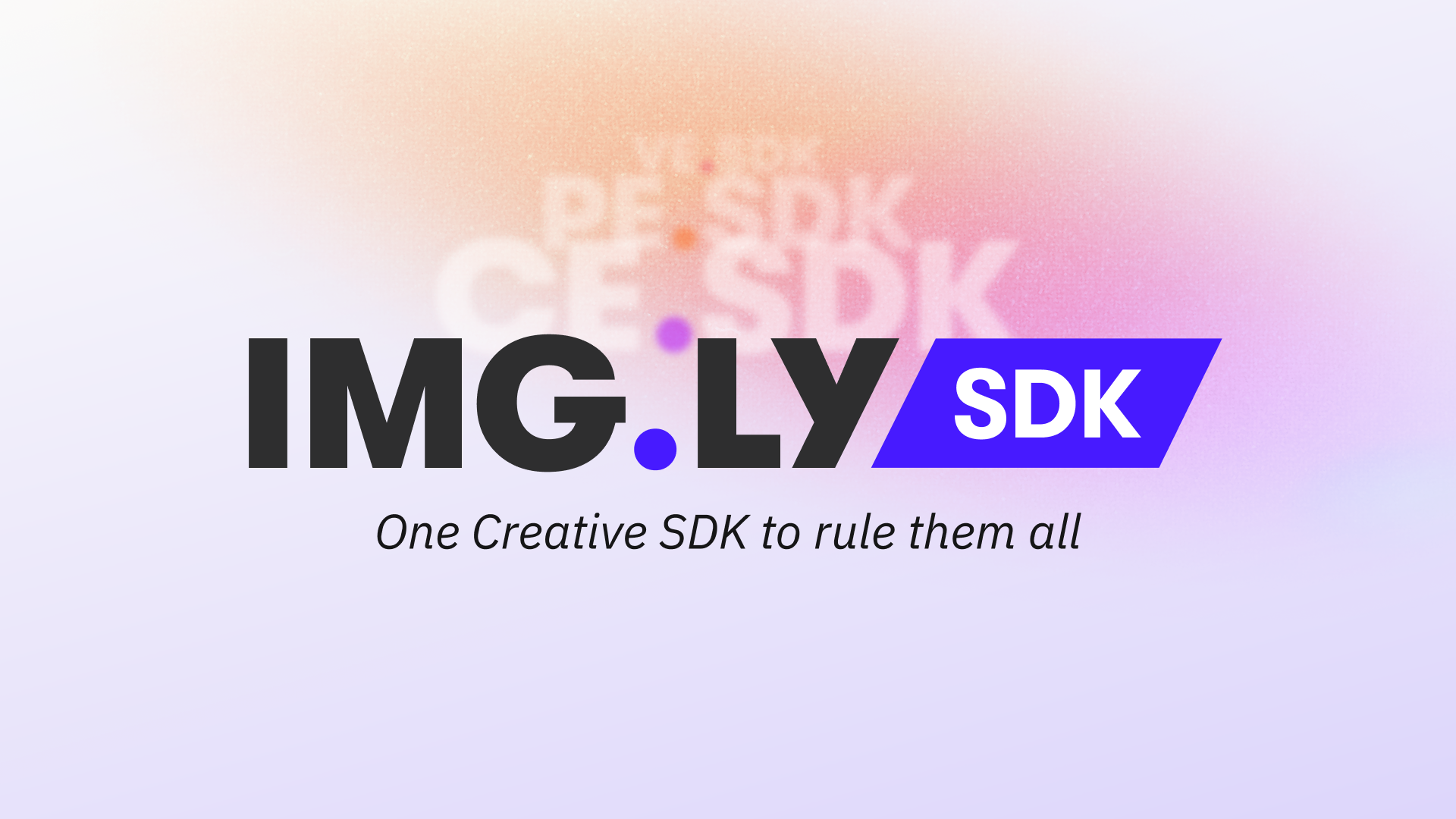The Personalization Experience is a new initiative by the global print expo FESPA that brings together over 3,000 stakeholders from every part of the print value chain, from brands and agencies to retailers, printers, and their suppliers. Its goal is to connect them with OEMs and software providers to explore the potential of personalization in sportswear, packaging, products, loyalty, and custom interiors.
The Personalization Experience Podcast features a series of interviews with key stakeholders to set the tone for the conference. In one such interview, Richard Askam spoke with our founders to discuss how IMG.LY's solution fits into this puzzle.
Key Takeaways
Where does IMG.LY sit in the world of personalization?
IMG.LY started out by bringing photo and video editing to software on the web and on mobile as a classic SDK. This experience gave us some perspective on the overarching creative needs in digital and physical industries.
We set our eyes on this grander scheme and build a universal creative tool enabling workflows and automation in a fraction of the time and money you’d spent implementing creative capabilities yourself.
Personalization is at the core of IMG.LY’s CreativeEditor SDK, and it is being used to add personalization capabilities to print products as well as marketing and e-commerce applications.
What are the unique capabilities of IMG.LY’s SDK for personalization?
Any editing experience starts either from a blank canvas or a predefined design a user can adopt. The crucial insight is that every product needs a slightly different editing experience, both from the editor and templating point of view. Most design tools are far too complex for the average user to employ effectively, so we spent a lot of time figuring out the best starting point for every use case. Users can then tweak and adapt to add the core personalization element without worrying about designing non-essential elements from scratch.
Furthermore, personalization does not always have to require individual input, it can happen in an automated fashion as well. That is why CreativeEditor SDK also supports powerful automation features that enable variable data printing and mass customization using personal data.
What is the state of personalization in the print industry?
During his 15+ years in the personalization business, Richard has encountered a common objection: it's just not cost-effective to print a single item. However, his go-to rejoinder is that you are printing a million ones. While the technical feasibility of personalization is present, the print industry has traditionally been hesitant to promote personalization to customers. Fortunately, this is changing with unit economics that are reducing the cost of small-batch printing, coupled with readily available personalization software such as IMG.LY's CreativeEditor SDK.
While technology infrastructure can be a significant cost, CreativeEditor SDK can substantially bring down costs and facilitate a faster time to market. More importantly, personalization adds substantial value to any product and increases customers' willingness to pay, easily offsetting any cost increase.
What is the biggest barrier to personalization?
Many things need to come together for personalization to go fully mainstream. In addition to the technical capacity and brands' willingness to take risks with personalization, the process from the consumer end must also be accessible. However, it is not always clear how to add consumer-facing personalization capabilities to an existing product. Starting with a design generated outside the core workflow of a printing application can be cumbersome and create too much friction for consumer-scale deployment.
Nevertheless, as more print applications appear in the wild and positive examples are set, user habits form, and the adoption of personalization becomes more widespread, the easier it will become for all stakeholders to adopt personalization on a larger scale.
There's a growing trend that is making simpler personalization increasingly important, and that is the decreasing costs of hardware. Even high-end industrial printers are becoming more affordable, which means smaller shops can now acquire industrial-grade printers. However, this also brings new challenges, as smaller shops may not have the design resources to implement personalization on the frontend of their powerful hardware. This is where IMG.LY’s editor comes in - it provides design capabilities to the printer’s customers and creates an ecosystem around the editor that offers templates and other assets to use for print designs.
If you're interested in discussing personalization or want to explore a solution for your use case, we invite you to meet us at FESPA 2023 or reach out to us directly.







